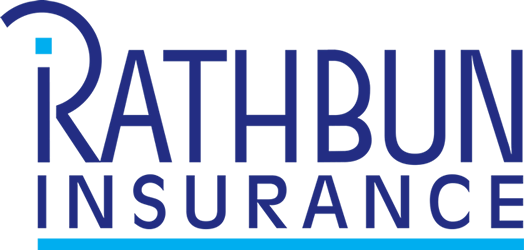
A home purchase comes with excitement and stress, until the long-awaited closing. With the keys to your new home in hand, you pass the threshold into your future filled with friends, family and memorable moments. You've surmounted all the hurdles.
Whether you had this experience years ago or just last week, your homeowners insurance probably isn't top of mind after dozens of signatures and negotiations.
If you've been in your home for a few years without a coverage review, there's a good chance you're underinsured. Even if you bought recently, you might have grabbed a homeowners policy without much thought just for the sake of closing. Now that you're in your home and things are settling down, it's an excellent time to ensure you have the coverage you need for the long haul.
Interpreting your policy
It's hard to review a policy that tops 20 pages. Much of it reads like legalese, but it's still important to understand. Here are a few areas to focus on when considering your homeowners coverage and limits.
Start with your declarations page
Your declarations page summarizes your homeowners coverage. It appears on the first few pages before the contract language. The declarations page lists your coverage types and limits, the maximum amount the insurance company will pay you in the event of a covered loss. For example:
- Dwelling (coverage A), which protects the structure, like your roof, flooring and other materials
- Other structures (coverage B), which protects things not attached to your home, like a fence or shed
- Personal property (coverage C), which protects your personal property and moveable things in your home, such as appliances, clothing, jewelry and electronics
- Loss of use (coverage D), which reimburses your expenses if you need to live elsewhere after a covered peril
- Personal liability (coverage E), which helps with property damage and bodily injury claims made by other people that you're legally obligated to pay
- Medical payments (coverage F), which helps with medical expenses if someone else sustains a bodily injury while on your property
You might have more (or less) coverage than what appears on your declarations page, so review your policy with your agent.
The lender's interests and your interests: a tale of two liabilities
From your perspective, homeowners insurance should protect you and your belongings and help you rebuild after a catastrophe. A mortgage lender's perspective is slightly different. They're interested in protecting their investment, which is the outstanding loan on your home. Unless you're mortgage-free, your home is insured as your lender requires. But there's a good chance the level of protection you chose when you bought your house isn't adequate for your risk today.
Your home insurance should cater to both interests:
- Coverage to rebuild the structure, so you resume payments to the lender or the lender receives total compensation for the loan and retains ownership
- Coverage to replace your belongings, reimburse you for housing during construction, and get your home back to the way it was before the event
Homeowners insurance offers protection beyond your home. It also covers your personal liability. That alone might be worth a call to your Rathbun Insurance Account Manager.
Replacement value or market value?
You might think it's enough to insure your home for market value (the cost people are willing to pay for your home). However, its replacement value (the cost to rebuild from the ground up) may exceed its market value. Your home's market value today could be quite different next year. And the price of materials to rebuild your house will likely increase year over year.
While some homeowners policies include an inflation guard, not all do. And you could be stuck with the difference.
The purpose of insurance is to make you whole again or put you back in the same type of house you had before the loss.
You can get an idea of your liability by creating a home inventory. Make a note of the contents and materials used to build your house. Consider upgrades, collectibles, construction materials, electronics, clothing, furniture and appliances.
Policy limits and catastrophe coverage: an example
Let's say you have a $200,000 limit for your dwelling and a $100,000 limit for personal property. Your house catches fire and the blaze spreads to your custom detached garage. Everything is destroyed: The insurance company writes it off as a total loss.
Will $200,000 be enough to rebuild, using today's prices for materials?
Consider the total cost to rebuild your home, including the roof, siding, lumber, nails, gutters, flashing, insulation, windows, deck, etc. Then consider the internal workings of your house like the walls, crown molding, flooring, carpet, floorboards, paint, built-ins, heating and cooling system, boiler, generator, water heater, whole-house dehumidifier and water filtration system.
Now ask yourself again: Will $200,000 cover the cost to restore what you had, using today's pricing for materials?
When you reach your insurance policy limits, the money stops. You may have to forgo the custom reclaimed wood flooring or solar panels you had before the fire just to get a roof over your head. Either that or you're paying out of pocket. And who wants to pay twice?
Other structures are subject to limits equaling 10% of your home's total coverage. Will $25,000 cover the cost of your fully insulated two-car garage with a wood shop? You might be disappointed if you end up with a drafty single-car garage instead.
Top off your total structural loss with a list of items needed to replace everything in your home. Will $100,000 be enough to replace everything you own?
Consider rugs, drapes, furniture, clothing, electronics, jewelry, collectibles, artwork and appliances. A high-end kitchen could quickly deplete 30% of a $100,000 limit all by itself.
- Replacement value reimburses the cost of replacing your property, without depreciation.
- Actual cash value reimburses the cost of replacing your property, minus depreciation.
Other ways to cover your homeowners risk liability gaps
Now that you've done your home inventory, ask your agent how to close the liability gap and insure against losses. Here are some options to consider:
- Additional living expenses coverage helps if you're forced to live somewhere else while your home is being rebuilt or rehabbed. Consider the cost of living in your area, especially if you have school-aged children or other reasons to stay in your neighborhood.
- Building ordinance or law protects you if a (covered) peril damages a part of your home and the city forces you to upgrade the entire house to code.
- Riders, or floaters, cover specialty items like jewelry, computers and silverware (generally up to $2,500).
- Collectibles insurance (a scheduled property endorsement) covers high-ticket items like artwork, designer handbags, antiques and other collectibles.
- Other structures covers anything not attached to your house. Think about increasing this coverage if you have stylish outbuildings or elaborate fencing.
- Personal liability usually covers up to $100,000, but you might want to go higher to protect yourself from footing the bill for a lengthy lawsuit.
- Extended replacement cost is another way to handle inflation. You can increase your home's replacement value up to 50% over the guaranteed replacement cost to rebuild. This is especially useful if you're faced with price gouging after a natural disaster.
- Sewer backup covers you in case a sewer line or sump pump backs up.
- Flood coverage is a separate line of insurance you can buy. Floods can happen anywhere. Most floods occur outside identified flood plains (snowmelts or flash rains, for example). Anyone can be vulnerable to this costly liability.
- Earthquake coverage is available as a separate line of insurance. Earthquakes can occur anywhere, not just in California. If an earth tremor structurally damages your house, your budget might get rocked, too.
- Comprehensive (H05 form) insurance offers broader coverage than a standard homeowners (H03 form) policy, and can include things like lost or misplaced jewelry instead of theft only.
- Personal umbrella coverage kicks in when you hit the limit on your policy. If you have home and auto policies, an umbrella will open over either policy once it's reached its limit.
- Inflation guard increases your dwelling coverage limits to match inflation (usually 2% to 4%). The cost to rebuild can be shocking in an inflationary spiral. Check with your agent to see if it's included in your policy or if you have to add it.
Schedule a review with your insurance agent
Now that you've nailed down the jargon, contact your Rathbun Account Manager and set some new coverage limits. Build your risk liability plan and seal the gaps with a strong homeowners insurance foundation that protects you and your investment.

